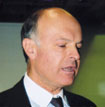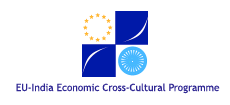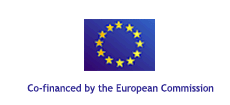
Within the "Europe and India: Past, Present and Future" project, Arsenal Research has elaborated a joint research programme for a pilot project in hydrogeology mainly involving experts from India and Austria. The applied research programme will last about one year, starting from May 2000 and ending April 2001. It focuses on the impact of human activities in highly populated areas on the quality of drinking water resources.
It is the intention of our project to initiate collaboration activities concerning academic personnel and experts from different countries, to define existing problems and to propose methodologies to solve them within the framework of the different cultural backgrounds involved. It is also the intention of the "EU-India Economic Cross-Cultural Programme" to promote and intensify contacts between the people of the participator countries so that mutual trust and awareness develops between the parties.
The basis for the pilot project was laid at a meeting in Vienna in November 1999 by B.G. Sidharth, R. Spendlingwimmer and myself. During this meeting, agreement was achieved for the general topic of the pilot project, namely "Urban Hydrology - Groundwater Management and Groundwater Protection". Further, two options for the location of the pilot project were presented briefly at that meeting: the industrial area in the R.R. District and that of Saroornagar. Closer contacts and discussions with the Indian partner took place during the first workshop in Hyderabad in December 1999, in presence of the Chief Minister of Andhra Pradesh, the Ambassador of Italy and the Trade Commissioner of Austria. In individual talks and at the round-table meeting, R. Spendlingwimmer and myself had the opportunity to discuss and to formulate specific topics within the pilot project, such as technical topics or the selection of a suitable area for the pilot project in Hyderabad, as well as the time schedule. Personnel matters, including the definition of the team of experts and areas of responsibility were also discussed. It was agreed that the district of Patancheru is the most suitable location for this pilot project since there are already relevant data available, and there are problems prevailing there - environmental and groundwater pollution - which are also of socio-economic relevance. Industrial and hygiene-related demands are the source of conflicts. Finally, the team agreed unanimously that the B.M. Birla Science Centre in Hyderabad, with its representative B.G. Sidharth, should take responsibility for co-ordination for the Indian team regarding all activities in connection with the pilot project. During the period from December 1999 to April 2000, contacts between the experts in Hyderabad and Vienna were intensified via e-mail and the exchange of information and data. In May 2000, the pilot project started officially.
In August 2000, R. Spendlingwimmer visited Hyderabad to intensify contacts with local experts and institutions, and to personally encourage MapWorld to release DEM/DTM data. It appeared at this time that R.L. Dhar, Head at the National Geophysical Research Institute for Groundwater Exploration and Management, was the most competent Indian partner for the pilot project. He is not only an earth scientist but also has access to very important data and documents. Since this visit to Hyderabad, the Austrian team has been in possession of topographical and geological maps from the Patancheru area and also of various publications and chemical analyses. From September to November, DEM/DTM data arrived and the first graphics were created. They will be presented today in the afternoon session. Although chemical analyses of water samples from wells and surface runoff, and of soil samples, were already available, external control measurements by our laboratory in Vienna were also carried out.
The results of the joint research project will be presented in Hyderabad in July 2001 during the course entitled "The Pilot Project in Patancheru: a Case Study".

